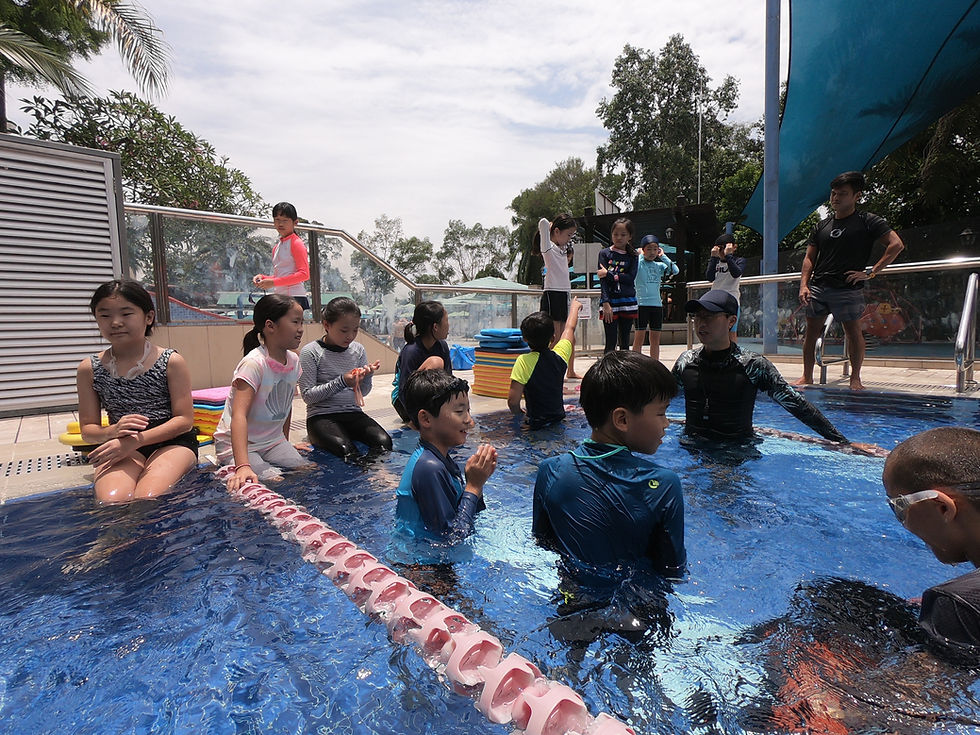Games for Sibling Bonding During Swim Practice
- SG Sink Or Swim

- May 1
- 3 min read

Swim practice doesn't have to be all drills and lap swimming — it can also be a great opportunity for siblings to bond, develop teamwork, and make swimming a shared experience. Whether they’re close in age or several years apart, incorporating fun, skill-based games into their swim time helps improve water confidence, coordination, and cooperation.
In this article, we explore a variety of swimming games designed specifically for siblings, combining fun with functional skill development in a supportive environment.
🧠 Why Sibling Swim Games Matter
Sibling games during swim sessions offer more than just entertainment — they promote:
Teamwork and trust
Positive sibling interaction
Healthy competition and motivation
Skill development through play
Improved social and emotional bonding
These games can easily be adapted for home pools, swim lessons, or recreational swim time.
🏊♂️ Top Games for Sibling Bonding During Swim Practice
1. Partner Races with a Twist
How it Works:Siblings pair up to complete short races while connected — holding a pool noodle between them, using one arm each, or tethered by a towel.
What It Builds:
Coordination
Timing
Communication
✅ Fun challenge that levels the playing field for different skill levels.
2. Treasure Hunt Tag
How it Works:Sink a few pool toys or dive rings. One sibling hides them; the other races to find and collect them. Add clues for older swimmers.
What It Builds:
Underwater confidence
Breath control
Quick decision-making
✅ Encourages problem-solving and fair play.
3. Relay Challenges
How it Works:Create mini relays where siblings alternate tasks: swim one lap, retrieve a ring, do a somersault, and tag the other to go.
What It Builds:
Cardiovascular endurance
Task sequencing
Cooperation and cheering each other on
✅ Great for family swim time or small group classes.
4. Mirror Me
How it Works:One sibling performs a movement or stroke, and the other mimics it exactly — freestyle, frog kicks, handstands, or goofy moves included!
What It Builds:
Body awareness
Creativity
Observation and imitation skills
✅ Helps younger siblings learn from older ones in a low-pressure way.
5. Noodle Jousting (Safe Play Only!)
How it Works:Each sibling sits on a pool float or kickboard, armed with a pool noodle. They try to gently knock each other off balance.
What It Builds:
Balance
Core strength
Strategic thinking
✅ Fun physical challenge — always supervise closely for safety.
6. Silent Signals
How it Works:One sibling must communicate an action (like “dive,” “kick,” or “go underwater”) using only gestures or eye contact.
What It Builds:
Nonverbal communication
Focus and attention
Patience
✅ Ideal for building quiet teamwork and trust.
7. Obstacle Course
How it Works:Set up a course with floats, noodles, dive sticks, and laps. Siblings take turns timing each other or doing it together.
What It Builds:
Versatility
Physical endurance
Encouragement and support
✅ Let siblings take turns designing the course to foster leadership.
🧩 Tips for Making the Games Work
✅ Choose cooperative over competitive games for young or closely-matched siblings.
✅ Let each sibling take a turn being the leader or game master.
✅ Celebrate teamwork, not just wins.
✅ Adapt the difficulty based on skill gaps — use floaties, fins, or adjust game rules.
✅ Supervise closely to keep play fun and safe.
🏁 Final Thoughts
Swimming together can become more than just a workout — it’s a chance for siblings to grow closer, support one another, and share joyful experiences in the water. With a few creative games, swim time becomes family time, building not only skills but lasting memories.





Comments